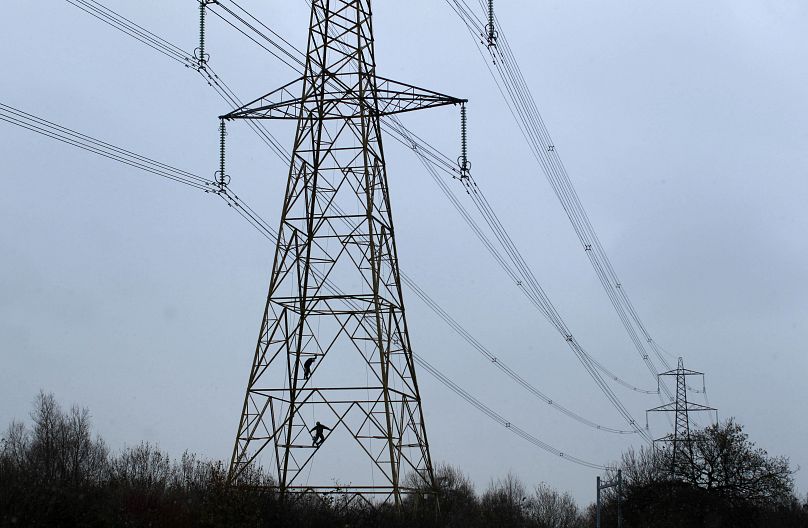An extensive new analysis of the world’s climate policies shows their limitations and which ones really work.
Countless policies have been thrown at the challenge of climate change, but how many have actually had an impact?
To figure out what really works, researchers looked at 1,500 ways countries have tried to curb heat-trapping gases over the years. Their answer: Not many have done the job.
And success often means someone has to pay a price, whether at the pump or elsewhere.
In only 63 cases since 1998, did researchers find policies that resulted in significant cuts of carbon pollution, their study in Thursday's journal Science found.
“The key ingredient if you want to reduce emissions is that you have pricing in the policy mix,” said study co-author Nicolas Koch, a climate economist at the Potsdam Institute for Climate Impact Research in Germany.
“If subsidies and regulations come alone or in a mix with each other, you won’t see major emission reductions. But when price instruments come into the mix like a carbon energy tax then they will deliver those substantial emissions reductions.”
The study also found that what works in rich nations doesn’t always work as well in developing ones.
Still, it shows the power of the purse when fighting climate change, something economists always suspected, said several outside policy experts, climate scientists and economists who praised the study.
“We won't crack the climate problem in wealthier nations until the polluter pays,” said Rob Jackson, a Stanford University climate scientist and author of the book Clear Blue Sky. “Other policies help, but nibble around the edges.”
“Carbon pricing puts the onus on the owners and products causing the climate crisis,” Jackson said in an email.
What climate policies have worked?
A great example of what works is in the electricity sector in the UK, Koch said.
Britain instituted a mix of 11 different policies starting in 2012, including a phaseout of coal and a pricing scheme involving emission trading, which he said nearly halved emissions - “a huge effect.”
Of the 63 success stories, the biggest reduction was seen in South Africa's building sector, where a combination of regulation, subsidies and labeling of appliances cut emissions nearly 54 per cent.
The only success story in the United States was in transportation. Emissions dropped 8 per cent from 2005 to 2011 thanks to a mix of fuel standards - which amount to regulation - and subsidies.
Since the study stopped at 2022, it doesn't evaluate the US’s nearly $400 billion (€360 bn) in climate-fighting spending package passed two years ago as a cornerstone of President Biden's environmental policy.
Study shows even successful climate policies are failing to make a big difference
Yet even the policy tools that seem to work still barely put a dent in ever-rising carbon dioxide emissions.
Overall, the 63 successful instances of climate policies trimmed 600 million to 1.8 billion metric tonnes of the heat-trapping gas, the study found.
Last year the world spewed 36.8 billion metric tonnes of carbon dioxide while burning fossil fuels and making cement.
If every major country somehow learned the lesson of this analysis and enacted the policies that work best, it would only shrink the United Nations “emissions gap” of 23 billion metric tonnes of all greenhouse gases by about 26 per cent, the study found.
The gap is the difference between how much carbon the world is on track to put in the air in 2030 and the amount that would keep warming at or below internationally agreed upon levels.
“It basically shows we have to do a better job,” said Koch, who is also head of the policy evaluation lab at the Mercator Research Institute in Berlin.
Niklas Hohne at Germany's New Climate Institute, who wasn't part of the study said: “The world really needs to make a step change, move into emergency mode and make the impossible possible.”
How did the researchers evaluate climate policies?
Koch and his team looked at emissions and efforts to reduce them in 41 countries between 1998 and 2022, and logged 1,500 different policy actions.
They bunched the policies in four broad categories - pricing, regulations, subsidies and information - and analysed four distinct sectors of the economy: electricity, transportation, buildings and industry.
In what Koch called “the reverse causal approach," the team looked for emission drops of 5 per cent or more in different sectors of countries' economies and then figured out what caused them with the help of observations and machine learning.
Researchers compared emissions to similar nations as control groups and accounted for weather and other factors, Koch said.
The team created a statistically transparent approach that others can use to update or reproduce it, including an interactive website where users can choose nations and economic sectors to see what's worked.
And it could eventually be applied to the 2022 Biden climate package, he said, which was heavy on subsidies.
John Sterman, a management professor at MIT Sloan Sustainability Institute who wasn't part of the research, said politicians find it easier to pass policies that subsidise and promote low-carbon technologies. But that’s not enough, he said.
“It's also necessary to discourage fossil fuels by pricing them closer to their full costs, including the costs of the climate damage they cause,” he added.












